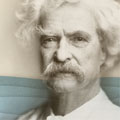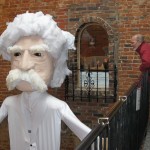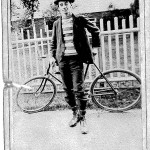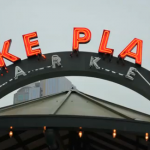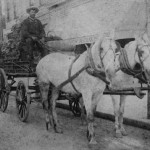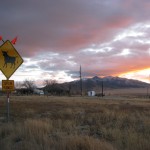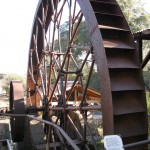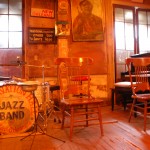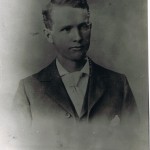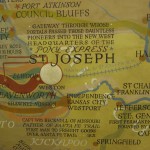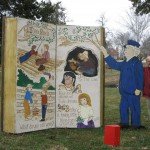We begin our trip west by van across the Kansas plains from St. Joseph, Missouri, just as Samuel Clemens (Mark Twain) and his brother Orion did 150 years ago.
They had paid $200 each in 1861 for overland stagecoach tickets to Carson City, Nevada Territory (Orion had been named the Territory’s secretary). The name of the stagecoach firm—Central Overland California and Pike’s Peak Express—was almost as long as its 1,700-mile route to Carson City.
If we occasionally feel cramped in Allegro III, our Dodge Grand Caravan, the tight quarters are self-inflicted. Five suitcases, ten large cartons of files and books, assorted cameras and computers, a box of Twain-trip T-shirts for our road hosts and a collection of Baton Rouge, La., pomegranates and gourds that a family friend has ordered Dan to deliver to his mother in Salt Lake City create the crush.
But Twain and his brother, limited to 25 pounds of baggage each, squeezed into a “swinging and swaying” six-horse stagecoach crammed with 2,700 pounds of mail. The two sat on the backseat faced by a perpendicular wall of mail that rose to the roof.
The ride up and down steep stream banks caused mailbags, canteens, coins, pistols and the Clemens to fly. “First we would all lie down in a pile at the forward end of the stage, nearly in a sitting posture,” Twain wrote in Roughing It, “and in a second we would shoot to the other end and stand on our heads.”
The sighting of a Pony Express rider racing at up to 25 mph to deliver the mail from St. Joseph to Sacramento, almost 2,000 miles, in about 10 days caused necks to stretch and eyes to strain, Twain wrote: “Man and horse burst past our excited faces, and go winging away like a belated fragment of a storm!”
So we visit the Pony Express Museum in St. Joseph to learn about the daring riders—some as young as 11, all about 125 pounds or less—who, armed with rifle, revolver and bible, rode like the devil.
Cindy Sue Daffron, the museum’s enthusiastic development director acts as tour guide, showing us lightweight leather mochilas, elegant in their streamlined simplicity. Equipped with four mail pouches, the mochila was thrown over the saddle of the rider—whom Twain called the “swift phantom of the desert.” The mochila could be quickly moved, after 10 miles or so, to a fresh horse’s saddle at the next relay station.
Daffron describes the oath that the Pony Express riders were sworn to uphold: “I agree not to use profane language, not to get drunk, not to gamble, not to treat animals cruelly and not to do anything else that is incompatible with the conduct of a gentleman.” But, as Dan Tham’s video indicates, Daffron also tells us about the real riders, not only the pious, profanity-free Boy Scouts of oath and myth.
Loren Ghiglione

